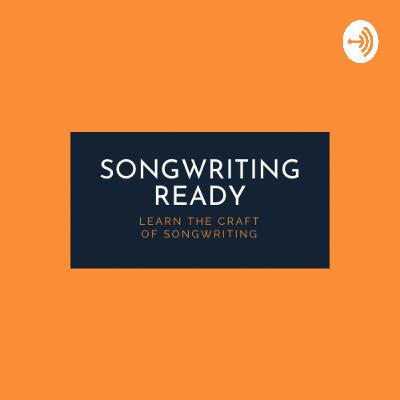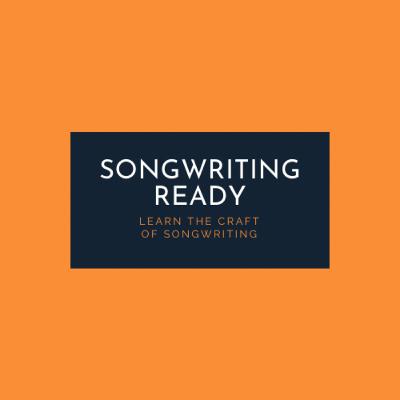How to write a song with different rhyme schemes. Learn the types of rhyme schemes you can use.
Update: 2021-01-18
Description
Make sure to join our FB group and grab your FREE Songwriting Blueprint: https://linktr.ee/songwritingready Perfect Rhymes - rhymes in which different consonants are followed by identical vowel and consonant sounds, such as in moon and June. The stressed sound that ends the line is identical.
Imperfect Rhymes - a rhyme in which there is only a partial matching of sounds (e.g., love and move ). I have heard these described as hard rhymes. They are perfectly acceptable and can really change the course of you song
One Rhymes (masculine) - a rhyme of final stressed syllables (e.g., blow / flow, confess / redress ). This is where a single syllable rhymes or the last syllable in a multi syllable word is rhymed.
Two Rhymes (feminine) - a rhyme between stressed syllables followed by one or more unstressed syllables (e.g., stocking / shocking, glamorous / amorous .). These are two syllable rhymes with the emphasis on the first. The vowels and inner consonants must match.
Three Rhymes - These are where the last three syllables rhyme and the preceding consonants differ (e.g., medium/tedium, facilitate, rehabilitate.).
Open Rhymes - Open rhymes do not end on hard consonants. Try to use these them on notes that are to be sustained (e.g., glow/snow, fly/try.).
Closed Rhymes - These are rhymes that end in a consonant. You can use phonetics to correct the sounds of closed rhymes when singing into a microphone. You can pronounce b’s with v’s etc...
Closed rhymes make us close our mouths when singing and can be touch to pronounce when singing.
Inside Rhymes - Inside rhymes are internal and occur within the line (e.g., that takes the cake for goodness sake.).
Rhyme Rules
- make rhymes consistent
- use the same rhyme pattern in all verses
- use the same rhyme pattern for your verse and chorus
- use a different rhyme scheme for your bridge
Types of Rhyme schemes
The ABAB - The abab scheme rhymes the first and third lines & the second and fourth lines of a verse)
A - shaking
B - hands
A - baking
B - pans
The AABB - The aabb rhymes the first and second lines & the third and fourth lines
A - tuck
A -buck
B -save
B- rave
The AAAA - The aaaa rhymes all four lines.
A - poor
A - chore
A - more
A - floor
The ABCB - The abcb rhymes the second and the fourth line
A - best
B - choice
C - gets
B - moist
The ABAA - Rhymes the first, third, and fourth lines
A- fat
B - blue
A - cat
A - hat
The AAB - Rhymes first and second lines
A - pine
A - fine
B -fly
Final thoughts on rhyme
- Keep it simple - Focus on one idea throughout the song.
- Keep it clear - Use specific pronouns that tell who is doing the talking (e.g., him, her, they, them it.).
- Keep it tight - Make every word count. Eliminate empty adjectives adverbs that aren’t necessary.
- Keep it focused- Use short strong one syllable words. Put the important words at the end of the line. Rhyme the words you want to stress.
- Keep it consistent - Keep the language and tone the same throughout the song. Keep your themes consistently literal or consistently figurative.
- Keep it coherent - Make sure every cause or reaction has an effect. Maintain logical chronology from line to line.
- Keep it specific - Go into detail about your subjects and try to show an emotion rather than tell it.
- Keep it unified - let the elements of time, place, and action blend together into a unified piece.
- Keep it real - nothing beats the real thing. Make sure your putting yourself into your songs. The craft is just a guideline not a substitute for the real thing.
---
This episode is sponsored by
· Anchor: The easiest way to make a podcast. https://anchor.fm/app
Imperfect Rhymes - a rhyme in which there is only a partial matching of sounds (e.g., love and move ). I have heard these described as hard rhymes. They are perfectly acceptable and can really change the course of you song
One Rhymes (masculine) - a rhyme of final stressed syllables (e.g., blow / flow, confess / redress ). This is where a single syllable rhymes or the last syllable in a multi syllable word is rhymed.
Two Rhymes (feminine) - a rhyme between stressed syllables followed by one or more unstressed syllables (e.g., stocking / shocking, glamorous / amorous .). These are two syllable rhymes with the emphasis on the first. The vowels and inner consonants must match.
Three Rhymes - These are where the last three syllables rhyme and the preceding consonants differ (e.g., medium/tedium, facilitate, rehabilitate.).
Open Rhymes - Open rhymes do not end on hard consonants. Try to use these them on notes that are to be sustained (e.g., glow/snow, fly/try.).
Closed Rhymes - These are rhymes that end in a consonant. You can use phonetics to correct the sounds of closed rhymes when singing into a microphone. You can pronounce b’s with v’s etc...
Closed rhymes make us close our mouths when singing and can be touch to pronounce when singing.
Inside Rhymes - Inside rhymes are internal and occur within the line (e.g., that takes the cake for goodness sake.).
Rhyme Rules
- make rhymes consistent
- use the same rhyme pattern in all verses
- use the same rhyme pattern for your verse and chorus
- use a different rhyme scheme for your bridge
Types of Rhyme schemes
The ABAB - The abab scheme rhymes the first and third lines & the second and fourth lines of a verse)
A - shaking
B - hands
A - baking
B - pans
The AABB - The aabb rhymes the first and second lines & the third and fourth lines
A - tuck
A -buck
B -save
B- rave
The AAAA - The aaaa rhymes all four lines.
A - poor
A - chore
A - more
A - floor
The ABCB - The abcb rhymes the second and the fourth line
A - best
B - choice
C - gets
B - moist
The ABAA - Rhymes the first, third, and fourth lines
A- fat
B - blue
A - cat
A - hat
The AAB - Rhymes first and second lines
A - pine
A - fine
B -fly
Final thoughts on rhyme
- Keep it simple - Focus on one idea throughout the song.
- Keep it clear - Use specific pronouns that tell who is doing the talking (e.g., him, her, they, them it.).
- Keep it tight - Make every word count. Eliminate empty adjectives adverbs that aren’t necessary.
- Keep it focused- Use short strong one syllable words. Put the important words at the end of the line. Rhyme the words you want to stress.
- Keep it consistent - Keep the language and tone the same throughout the song. Keep your themes consistently literal or consistently figurative.
- Keep it coherent - Make sure every cause or reaction has an effect. Maintain logical chronology from line to line.
- Keep it specific - Go into detail about your subjects and try to show an emotion rather than tell it.
- Keep it unified - let the elements of time, place, and action blend together into a unified piece.
- Keep it real - nothing beats the real thing. Make sure your putting yourself into your songs. The craft is just a guideline not a substitute for the real thing.
---
This episode is sponsored by
· Anchor: The easiest way to make a podcast. https://anchor.fm/app
Comments
In Channel







